Remodeling p38 signaling in muscle controls locomotor activity via IL-15
- PMID: 39141732
- PMCID: PMC11323882
- DOI: 10.1126/sciadv.adn5993
Remodeling p38 signaling in muscle controls locomotor activity via IL-15
Abstract
Skeletal muscle has gained recognition as an endocrine organ releasing myokines upon contraction during physical exercise. These myokines exert both local and pleiotropic health benefits, underscoring the crucial role of muscle function in countering obesity and contributing to the overall positive effects of exercise on health. Here, we found that exercise activates muscle p38γ, increasing locomotor activity through the secretion of interleukin-15 (IL-15). IL-15 signals in the motor cortex, stimulating locomotor activity. This activation of muscle p38γ, leading to an increase locomotor activity, plays a crucial role in reducing the risk of diabetes and liver steatosis, unveiling a vital muscle-brain communication pathway with profound clinical implications. The correlation between p38γ activation in human muscle during acute exercise and increased blood IL-15 levels highlights the potential therapeutic relevance of this pathway in treating obesity and metabolic diseases. These findings provide valuable insights into the molecular basis of exercise-induced myokine responses promoting physical activity.
Figures

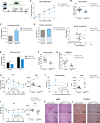
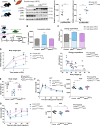
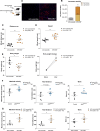
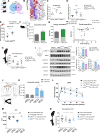
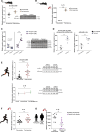
References
-
- World Health Organization (WHO), “Obesity and overweight” (WHO, 2020); www.who.int/news-room/fact-sheets/detail/obesity-and-overweight.
-
- Priest C., Tontonoz P., Inter-organ cross-talk in metabolic syndrome. Nat. Metab. 1, 1177–1188 (2019). - PubMed
-
- Chow L. S., Gerszten R. E., Taylor J. M., Pedersen B. K., van Praag H., Trappe S., Febbraio M. A., Galis Z. S., Gao Y., Haus J. M., Lanza I. R., Lavie C. J., Lee C. H., Lucia A., Moro C., Pandey A., Robbins J. M., Stanford K. I., Thackray A. E., Villeda S., Watt M. J., Xia A., Zierath J. R., Goodpaster B. H., Snyder M. P., Exerkines in health, resilience and disease. Nat. Rev. Endocrinol. 18, 273–289 (2022). - PMC - PubMed

